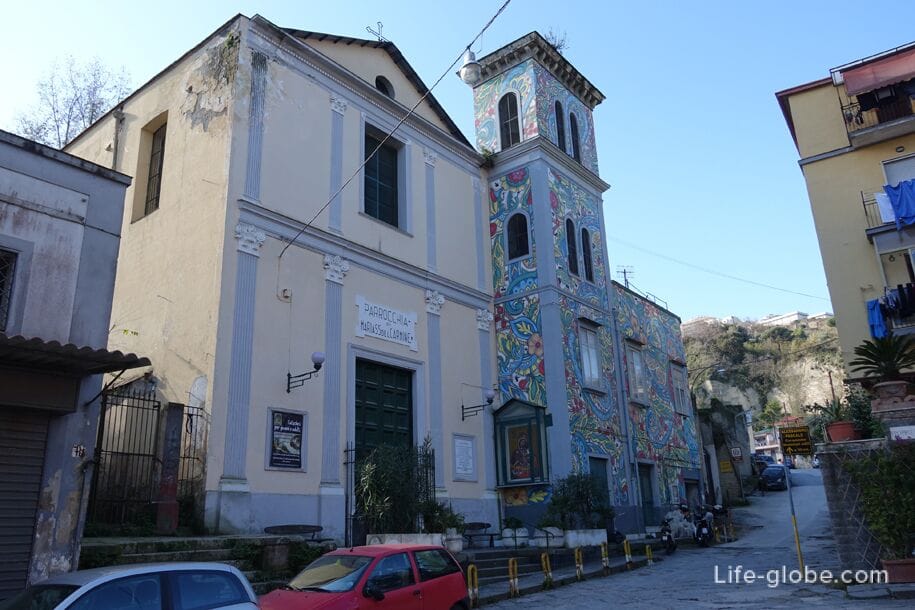
The cemetery of Fontanelle in Naples (Cimitero Delle Fontanelle) - an ancient cemetery of Naples, located in the caves at the foot of the hill Materdei.
Currently, the cemetery is not being used for its intended purpose, is a crypt and is a city landmark where you can see the skeletal remains of people, to learn the history of the city and the fate of the inhabitants of the past centuries.
The name of the cemetery of the Fontanelle, which means "the cemetery of Fontanelle", is due to the availability of water sources in the area in the past.
At present, the cemetery contains about 40,000 skeletal remains.
The cemetery is located in the cave in the tuff rock, consists of three large tunnels, trapezoidal, with height from 10 to 15 meters and a length of one hundred meters, connected by lateral corridors (passages), each of which has its own name.
The left corridor is called the passage of the priests because in it are the remains coming from the territories of the churches and parishes; the Central nave is called the passage of the plague, because it contains the bones of those who died because of the terrible epidemics; right of passage called the nave percentile it contains the bones of the poor.
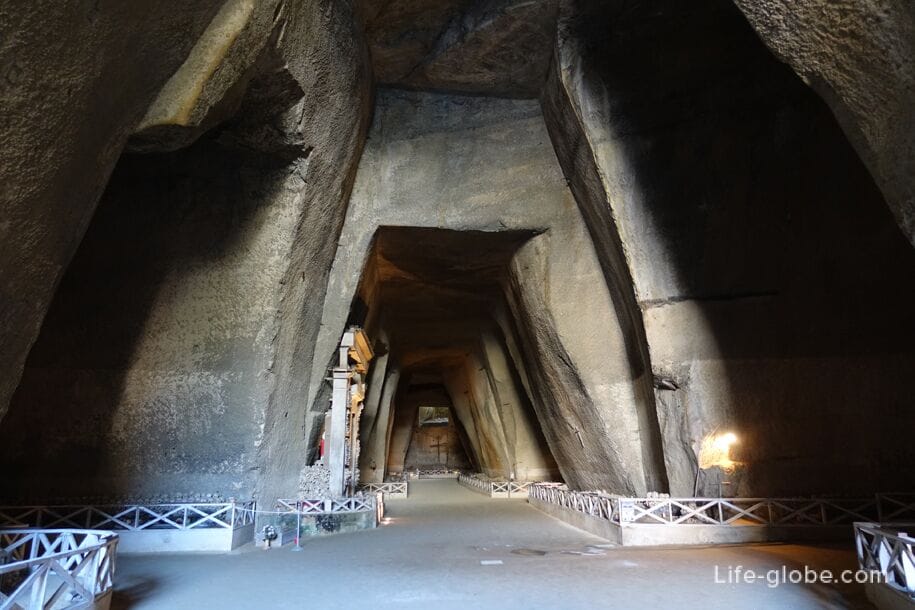

The sides of each aisle are fenced, which contains the skull, the large tibia and the femur. Many bones and skulls just piled in heaps, while others are in boxes.
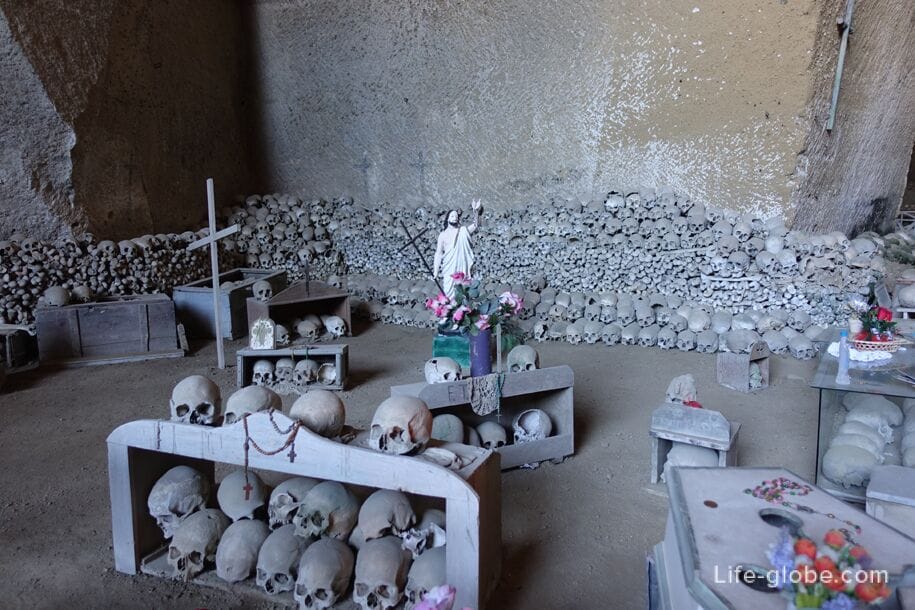
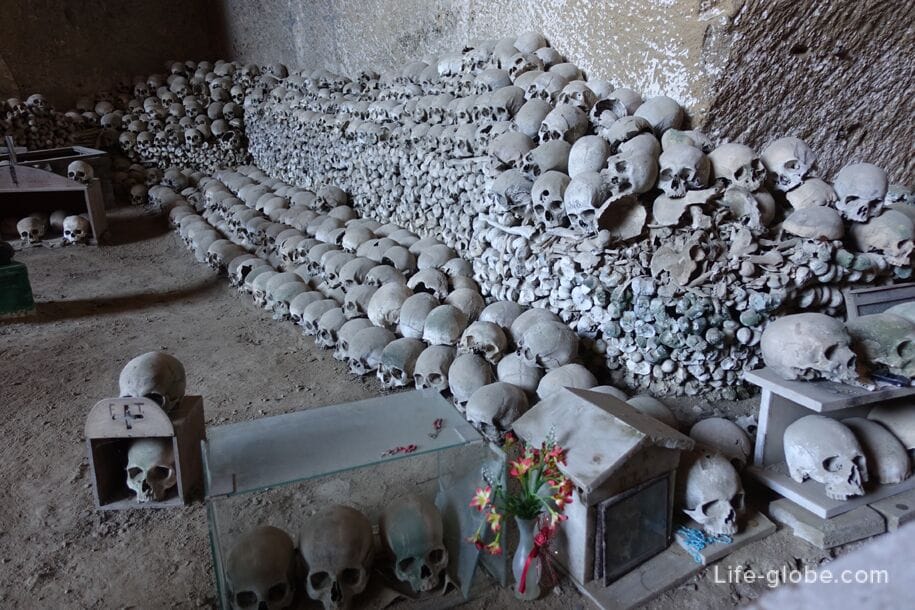
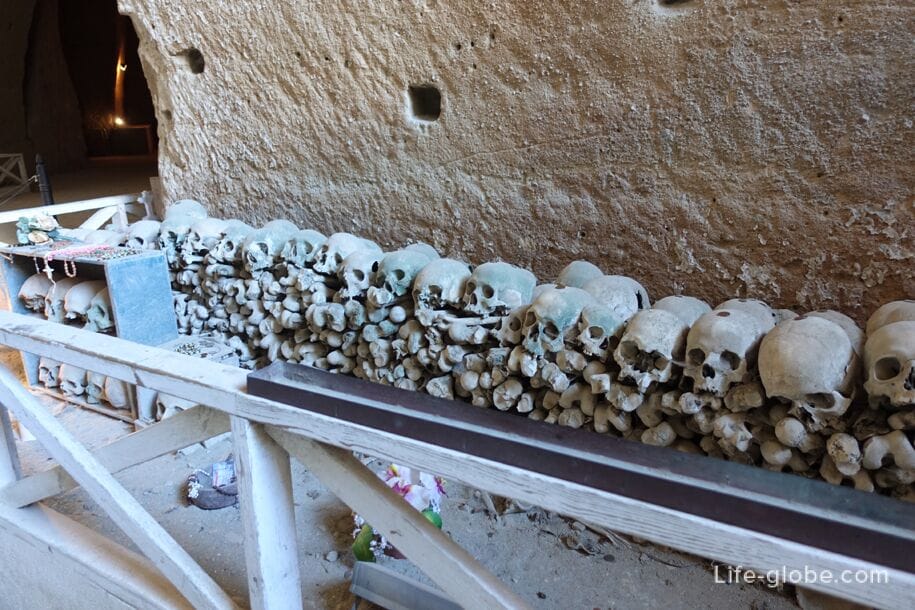


The bones in the floor of the cave
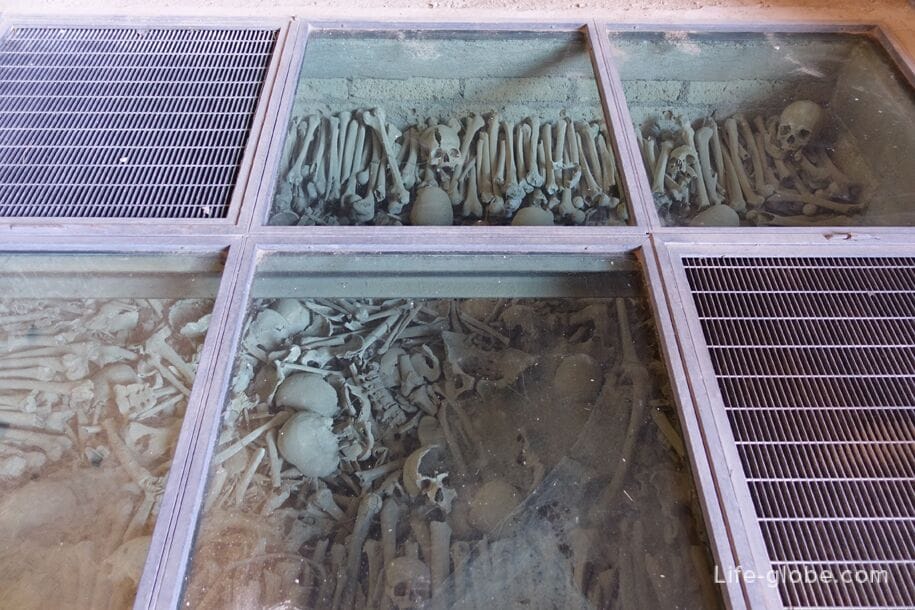
Some skulls are buried in boxes behind glass or open. This skull "adopted" during the cult of the ascension cemetery and the remains. Those "adoptive parents" who could afford it, piled skulls and bones in boxes, from marble to wood and even boxes of biscuit was in the course. Near some of the boxes have the names and years of adoption.


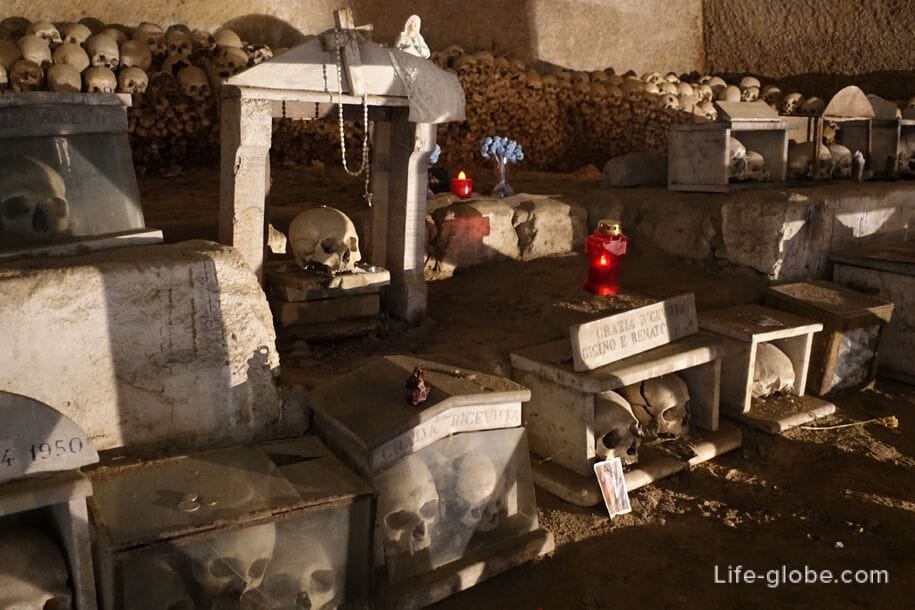
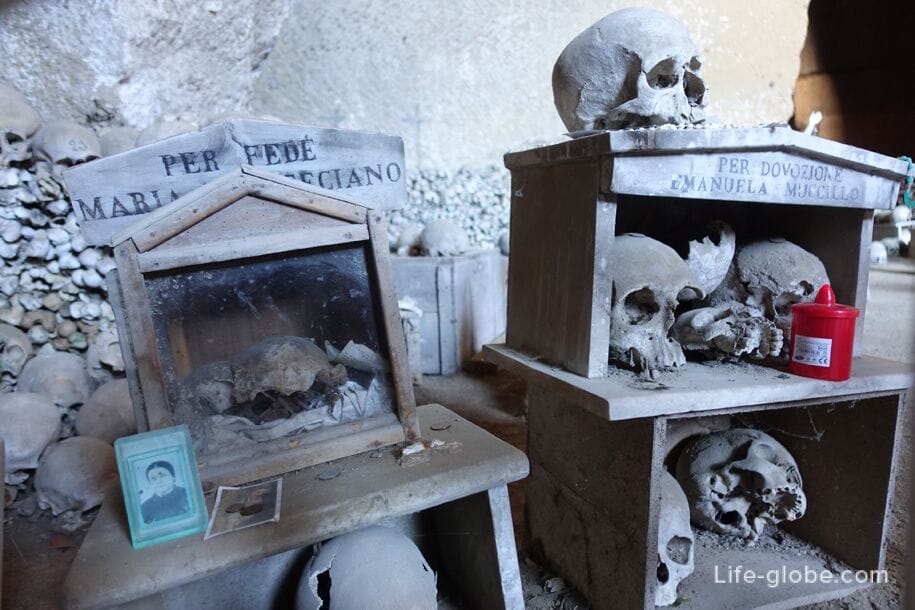
Most of the bones of the dead are in a chaotic state, with the exception of two skeletons: Philip Karaty count of Cerreto of the Dukes of Maddaloni, who died in 1797, and Donna Margarita, who died at fifty-four years. Both are buried in coffins, protected by glass.
The body of Donna Margarita mummified and the skull wide open mouth, say a noblewoman tot choked and died of suffocation.
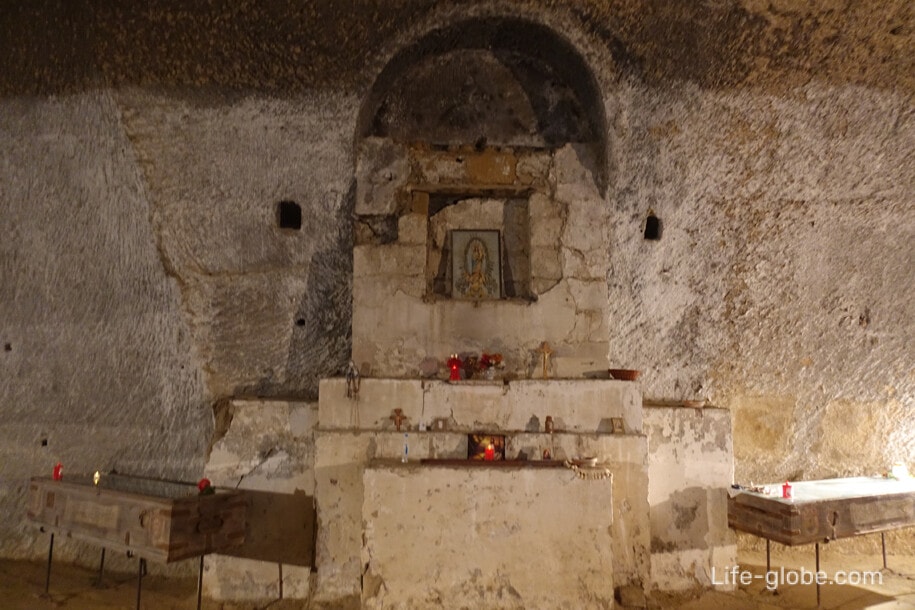
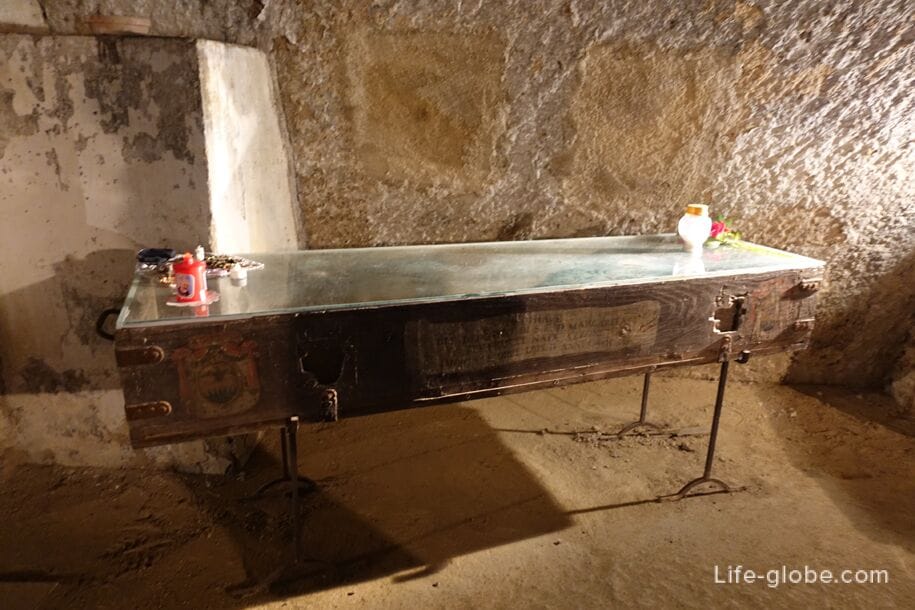
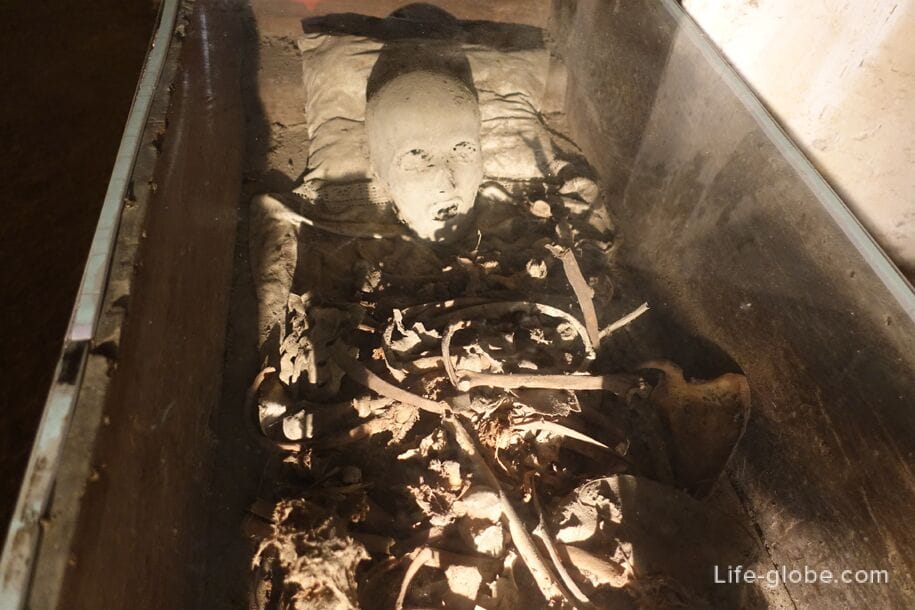
Chapel with a statue of Christ. To the left of the main altar, on which stands a figure of the Crucifixion, there is a high window and a cot, located here in first half of the twentieth century. Under the large window are two coffins, containing the remains of bones (possibly children).

The coffin in which the remains of two skeletons placed next to each other, and according to popular belief, they are called the two spouses.
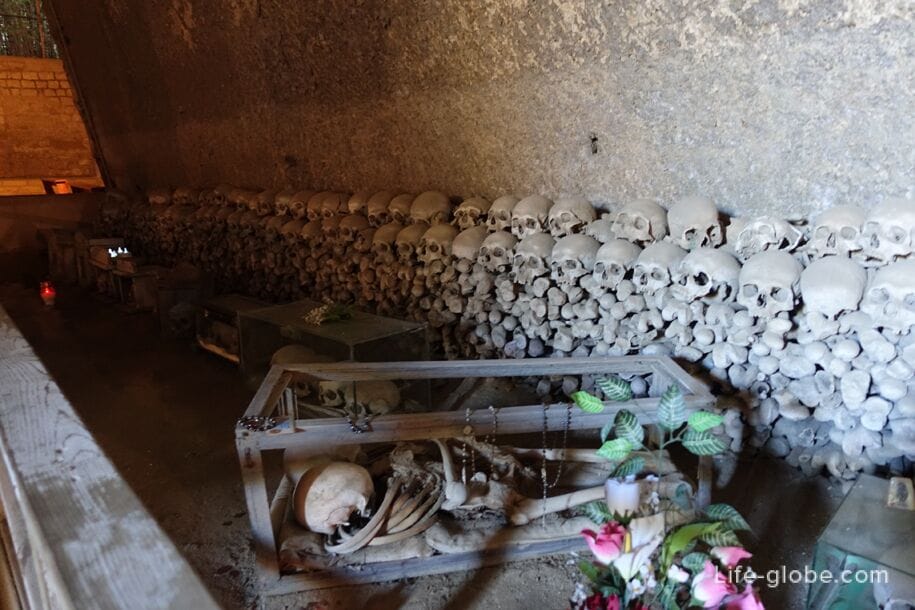
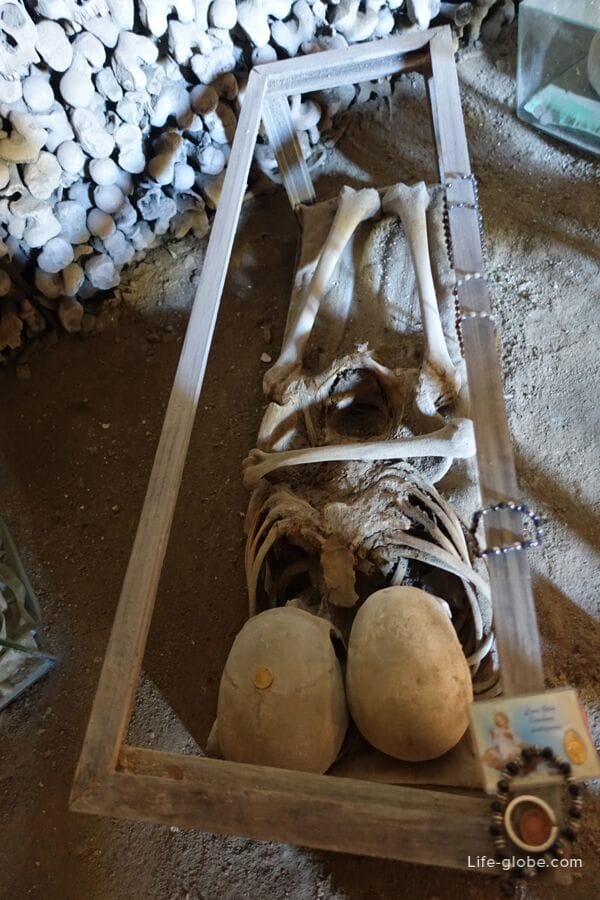
Headless statue of St. Monacone San Vincenzo Ferrer.


Niche with the three crosses and the base of the skulls from the Central cross. Here, according to Scripture, for at least a century, met the tops of ancient Camorra for the oaths of blood and performing other rites, and also for the death penalty.


In the center aisle, where the remains of plague victims, each side is occupied by piles of skulls, which, according to legend, was organized according to social status of the dead.

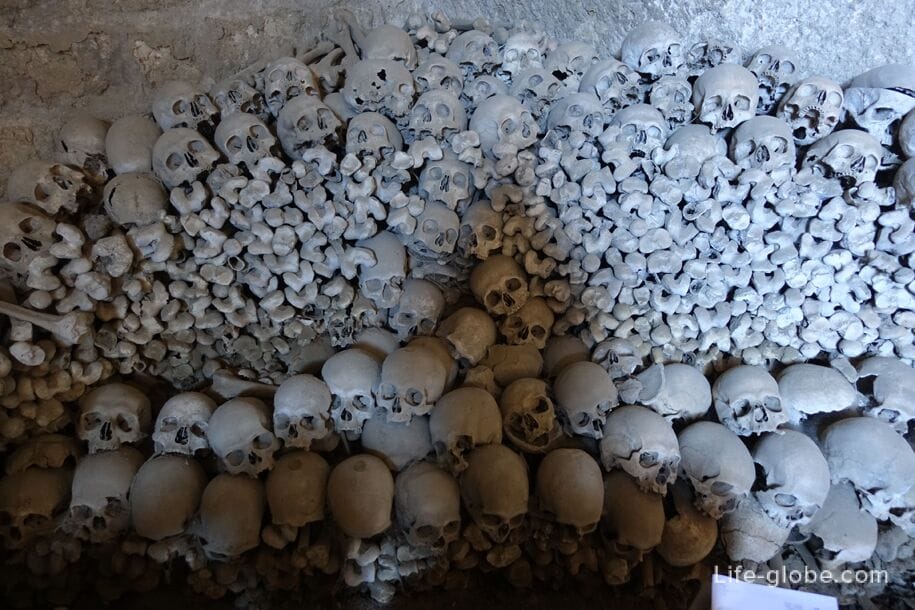
There is also a Big chapel assotech of the Central nave, full of large tibia and the femur, the center of which is the Sacred Heart of Jesus.
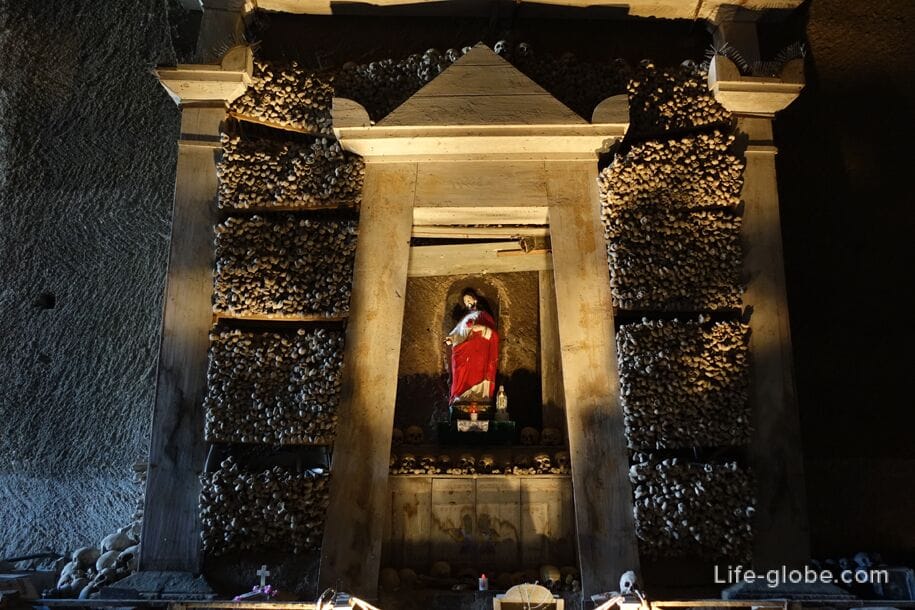
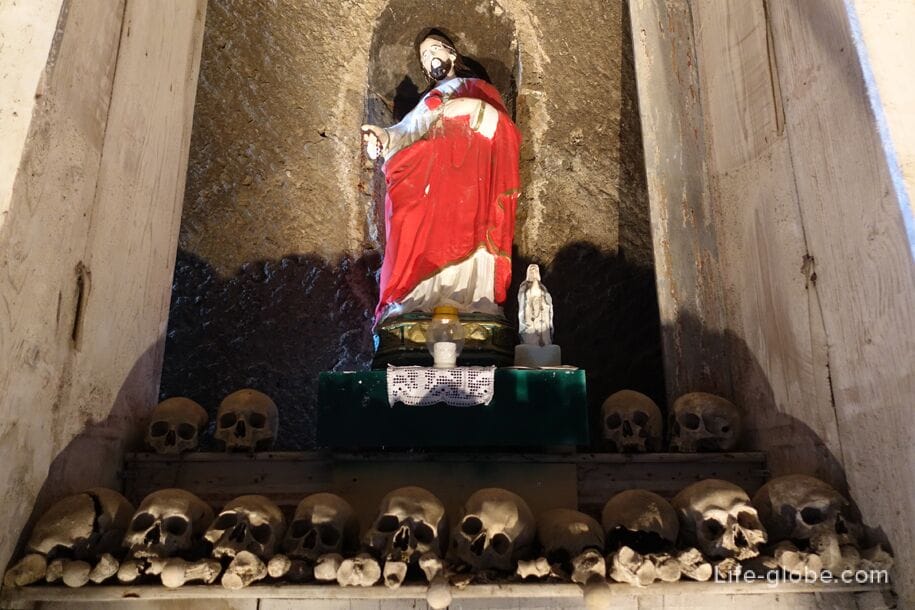
Up until 1600 in the area were several tuff quarries used to extract the tuff, a material which actually built the city.
During the Spanish conquests of the 16th century appeared the need for new areas for burial of the dead. So the decision was made to bury the dead outside the city. Authorities for the burial were allocated a chain of natural caves in the Eastern outskirts of the city.
Many Neapolitans wanted their bodies buried near the local Church. Then, already buried the remains of the city's cemeteries began to move in the cave outside of town, and released to bury the newly dead. Subsequently, the cave, the cemetery was called the cemetery of Fontanelle.
Then, in 1656, by the burial grounds were joined by thousands of anonymous corpses, victims of the great plague of that year. According to some in the caves were buried 250 000 bodies with a population at that time of 400 000 inhabitants and, according to others, even 300 000 bodies.
According to Neapolitan scientists, at the end of the 17th century, severe floods washed the remains of corpses on the streets of the city, presenting the most horrible spectacle. Anonymous remains were returned to the cave, then the cave became the unofficial final resting place for the needy of the city in subsequent years - a huge cemetery of the poor.
Most likely, the last of the corpses brought into the caves, became the victims of the cholera epidemic of 1837.
In 1872, father Gaetano Barbati had collected all the bones in the cave and distributed them in makeshift boxes and on wooden racks. Then in Naples arose, and then and has grown a cult around the remains unknown. Followers of the cult have said that they respect those who have nothing in life, who was too poor even for a proper burial. The devotees used to visit the skulls, cleaned them up, "adopted" them, thus even "returning" the skulls names (who came to their "caretakers" in dreams). Care of the cemetery grew into obsessive cleaning of the skulls, talking to bones, prayers for mercy, bringing flowers, household items and other offerings. At the entrance was built a small Church, Maria Santissima del Carmine.
The cult of devotion to the skulls of the Fontanelle cemetery lasted until the mid-20th century. In 1969, cardinal URSI of Naples decided that it was unhealthy devotion developed into fetishism and ordered the cemetery closed.
In 2000-the year the residents of the area convinced the municipal administration to reopen the cemetery. Then the cemetery of Fontanelle has undergone restoration as a historical place and once again became open to the public as a Museum.
The cemetery of Fontanelle is open for visits daily from 10:00 to 17:00 hours. Last admission 30 minutes before closing. Admission is free (complimentary).
Attention! Opening hours may vary, check before visiting.
The cemetery of Fontanelle is located at the address: Via Fontanelle, 80 (adjacent Via Vallone dei Gerolomini), near the catacombs of San Gaudioso.
The entrance to the cemetery is to the right of the Church of Maria Santissima del Carmine (Parrocchia Maria S. S. del Carmine), built adjacent to the tuff quarries in the late nineteenth century. This Church replaced a chapel built inside a career that until the eighties was regularly used for worship.
